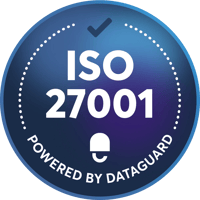ISO 27001 is an international standard that specifies requirements for an information security management system (ISMS). An ISMS is a set of policies and procedures that are designed to protect an organisation's information assets.
Clause 4.2 of ISO 27001 requires organisations to "understand the needs and expectations of interested parties". Interested parties are defined as "persons or organisations that can affect, be affected by, or perceive themselves to be affected by the organisation's activities".
By understanding the needs and expectations of interested parties, organisations can develop an ISMS that is more effective and meets the needs of all stakeholders.
The organisation shall determine the following:
- Interested parties that are relevant to the information security management system
- The requirements of these interested parties
- Which of these requirements will be addressed through the information security management system
Who are interested parties?
The Interested parties can include:
- Customers
- Employees
- Shareholders
- Suppliers
- Regulators
- The public
When identifying interested parties, it is important to consider a wide range of stakeholders. It is also important to be aware of the different types of needs and expectations that interested parties may have.
For instance, customers might have requirements about how their data is kept confidential, secure, and accessible. Employees could be concerned about safeguarding their personal information. Shareholders might focus on the organisation's financial stability.
Get ISO 27001 certified in as little as 3 months.
Your ISO 27001 certification process made simple.
Download your free guide to fast & sustainable certification

How to identify interested parties?
There are several ways to identify interested parties. Some common methods include:
Reviewing the organisation's risk assessment: The risk assessment should identify the organisation's information assets and the threats and vulnerabilities that these assets face. The risk assessment can also help to identify the interested parties who are most likely to be affected by a security incident.
Consulting with management: Management is often in the best position to identify the organisation's interested parties. They can also provide insights into the needs and expectations of these parties.
Conducting surveys and interviews: Surveys and interviews can be used to gather information from interested parties about their needs and expectations.
Holding focus groups: Focus groups allow a collection of interested parties to share their needs and expectations in a group setting.
How to assess the needs and expectations of interested parties
In pursuing ISO 27001 certification, comprehensively assessing the needs and expectations of interested parties becomes pivotal. This strategic process can be accomplished through a range of effective techniques, including:
Qualitative methods: Qualitative methods involve gathering open-ended information from interested parties.
Quantitative methods: Quantitative methods involve gathering numerical data from interested parties.
DataGuard helped us get ISO 27001 certified 50%.
Reece Couchman
CEO & founder at The SaaSy People
100% first-try pass rate in external audits on ISO 27001
How to address the needs and expectations of interested parties
The needs and expectations of interested parties should be taken into account when developing and implementing the ISMS. This will help to ensure that the ISMS is effective and meets the needs of all stakeholders.
There are a number of ways to address the needs and expectations of interested parties. Some common methods include:
Communicating with interested parties: The organisation should communicate with interested parties about its ISMS. This communication should be clear, concise, and transparent.
Involving interested parties in the development and implementation of the ISMS: Interested parties should be involved in the development and implementation of the ISMS. This will help to ensure that the ISMS meets their needs and expectations.
Responding to the needs and expectations of interested parties: The organisation should be responsive to the needs and expectations of interested parties. This means being willing to make changes to the ISMS as needed.
How to review the needs and expectations of interested parties
The needs and expectations of interested parties should be reviewed on a regular basis. This is important because the needs and expectations of interested parties can change over time.
The review process should identify any changes in the needs and expectations of interested parties.
The organisation should then make any necessary changes to the ISMS to ensure that it remains effective before logging the change.
If a review is conducted but there has been found to be no change required, it is still important to log that a review took place and to state what was done as part of the review.
How to pass an audit of ISO 27001:2022 Clause 4.2
To pass an audit of ISO 27001:2022 Clause 4.2, follow these steps below:
- Understand the requirements of Clause 4.2
- Identify your interested parties.
- Assess the needs and expectations of your interested parties.
- Address the needs and expectations of your interested parties in your ISMS.
- Document your understanding of the needs and expectations of your interested parties.
- Keep your documentation up to date.
- Be prepared to demonstrate your compliance with Clause 4.2 to auditors.
Here are some additional tips:
- As is crucial throughout the entire ISMS creation/maintenance journey, get buy-in from senior management. The success of your ISMS depends on the support of senior management. Make sure that they understand the importance of Clause 4.2 and are committed to meeting its requirements.
- Involve interested parties in the development and implementation of your ISMS. This will help to ensure that their needs and expectations are met. They will appreciate the transparency, and this can help build trust.
- Always conduct regular reviews of your ISMS to ensure that it remains effective in meeting the needs and expectations of interested parties.
By following these tips, you can increase your chances of success in implementing and maintaining an ISMS that meets the requirements of ISO 27001:2022.
P I C
PRIVACY
External DPO
Audit and risk analysis
Data Subject Requests
Online training courses
Cookie & Preference manager
Business advice from experts
INFOSEC
Prepare for ISO 27001
Build an ISMS
Cyber security
Asset management
Risk mitigation
Internal audit
COMPLIANCE
Digital whistleblowing system
Whistleblowing support
Compliance audit
Risk mitigation
Online training courses
Templates
ISO 27001:2022 requirements
Trusted and used by companies





TISAX® is a registered trademark of the ENX Association. DataGuard is not affiliated with the ENX Association. We provide consultation and support for the assessment on TISAX® only. The ENX Association does not take any responsibility for any content shown on DataGuard's website.
All data provided is for information only, based on internal estimates. This information is not indicative of KPIs, and is not given with any warranties or guarantees, expressly stated or implied in relation to accuracy and reliability.

